O is for OH so much fruit
Stories of home, Concord grapes, and a recipe for Country Grape (Wine) Vinegar
Yesterday it rained. When I did the few farm chores I had left in the cool rain it felt like an exhale, not mine but the ground, the trees, the animals of the forest, all settling. And most of all I hope the huge fires that burn not far away will finally resolve, turn in on themselves, burn underground as they do, but grow no more. I fell asleep to the sound of rain on a metal roof. This is what comfort sounds like when living in a drought.
This morning there is mist in the air, not smoke.
The apple trees look like weeping willows trimmed with red bobble ornaments and a bad haircut. It is the branches that reach skyward and have not succumbed to the gravity that pull most of the branches down in elegant, bowed arches. Here and there a few of the drooping bows are replaced by a jagged break and a limp straight branch. The apples are finally ripe and I am beginning to make dried apple rings. Cider comes later.
This past weekend Christopher and I had houseguests. Our three grandchildren stayed with us while their parents snuck out for a tenth-anniversary getaway to the coast. These three live not more than 20 yards away in a little cabin so visiting their grandparents is part of their day-to-day and not a novelty. We felt like we needed to step up our game a bit to keep them engaged, especially the two-year-old, who wasn’t enthusiastic about mommy and daddy heading off.
I decided we would make grape juice and grape jelly. They have been snacking on all the fresh grapes hanging from ancient vines draped around the farm. For the last weeks, I have seen them, like little birds, rustling around amongst the dense foliage and pop-out with handfuls of grape clusters.
We decided to use the Concord grapes because purple! And grape juice is the best way to deal with all the seeds. The Concord grapes here grow along a steep bank. This bank has been a battleground of the vine and the bramble for as long as we have been here. Both are more weed than not. Both have delicious deep purple fruit loaded with polyphenols. The blackberries are everywhere in the Pacific Northwest. I have no idea where the original Concord vine was planted but like many of the fruit on this property likely 80 or more years ago.
The Concord grape was developed in 1849, on a farm outside Concord, MA, by Ephraim Wales Bull. He experimented with seeds from Vitis labrusca, the grape native to eastern North America. One of the characteristics of these native grapes is the thick skin that slips easily off of the fruit. The flavor is also robust, quite distinctive, and will remind anyone of the grape juice and jelly of their childhood. There is a very good reason for this.
Two decades later, a dentist, his wife, and their son, in Vineland, NJ gathered 40 pounds of Concord grapes. They cooked and squeezed the grapes. They put the juice in bottles. Sealed them with a cork and wax and put them in a pot of boiling water. The hope was to employ Louis Pasteur's theory to kill any yeast and prevent fermentation. It was a success and thus commercial grape juice was born. The dentist’s name was Dr. Thomas Welch. By 1897 Dr. Welch was processing 300 tons of grapes into juice. (Welch’s is now a processing and marketing subsidiary of the National Grape Cooperative. As such it is owned by over seven hundred family farmers in the US and Canada.)
Back on our steep bank, in the last few years, the grapes have gotten the upper hand, so to speak, and are winning over the Himalaya blackberries. There are more grapes but the thorn-laden bramble canes wind throughout the patch. Picking the grape bunches is more treacherous than picking the blackberries that hang at the end of the canes. In both cases, the ripest juiciest of the fruit is out of reach. The kids and I picked the purplest of the grapes that we could reach. I was given lots of advice on ways I could reach further without falling down the bank and being swallowed by the brambles and canes, but mostly we let those fruits stay put.
We plucked the grapes off their stems and plopped them into the basket of the steam juice extractor and the smallest of us put the plucked grapes into his mouth. When we didn’t fill the basket with our two large bowls of grapes, Christopher went to the vines to reach more. The kids and I also decided to add some white concords growing elsewhere because pink is nice too.
A steam juice exactor is a four-part pot. The actual pot is the basin for the boiling water. The next is a vessel with an open cone in the middle that the steam rises through. The rest of the pot is a reservoir to hold the hot juice. This pot also has a small drain at the bottom that one attaches a silicon hose to. The third layer is basically a colander of fruit that the steam goes through and the juice drips out. The final part is the tight-fitting lid. This is what I have (not an affiliate link). I see in the photo the grapes still have the stems on. Lazy or busy me tried that once years ago. The flavor of the juice is affected.
As it is with things that you no longer remember the enchantment you once felt, I was reminded how fun this tool is when the kids squealed with delight as the first light purple liquid appeared in the tube. This excitement was nothing compared to when they tasted that juice. And wanted more. And more. (Admittedly, that was the moment when I questioned my sanity, had I been wise to come up with an activity that was feeding them pure sugar.)
We saved some juice, and we made the rest into jelly. I can’t say how many times the cooling jars were turned and checked. The wonder of watching the runny liquid jell. The jelly will be used on the sourdough waffles and pancakes. The breakfast their grandfather makes for them on Saturday Sleepover.
What they don’t know is that some of that juice will become Concord Vinegar…I won’t tell if you don’t.
Here is a recipe for Grape Juice (Wine) Vinegar.
My intention here is to celebrate grape juice. And keep this simple. Homemade grape juice, or purchased juice will give you a delightful wine vinegar, rich in polyphenols and flavor.
Grape juice falls beautifully in the range of having enough natural sugar to make enough alcohol for a nice acidic vinegar. Quick vinegar fermentation facts. Vinegar is a two-step fermentation you need the ethanol created by yeast to achieve acid. There is a direct correlation between the amount of sugar to ethanol and the amount of acid made.
(natural sugars + yeast -> ferments to ethanol -> add oxygen + acetic acid bacteria -> vinegar)
To learn more about vinegar check out my course How to Make Vinegar at Home or a course collab with my vinegar bestie Jori Jane Emde.
I want this to be to feel easy, easy enough for you to think, I can do this! So, this recipe doesn’t go into the details of winemaking by creating a must, fermenting, and pressing the juice. In fact, as you read on you will see that you will never actually be making wine that isn’t already turning to vinegar.
If you make your own homemade grape juice feel free to use your juice. It doesn’t matter what your process to make it is. No extra sugar is needed the grapes have enough.
I find that a steam extractor makes the best juice for simple fermentation of grape juice into vinegar. That said, I also already own one. I am not at all suggesting you get a steam extractor unless you have a lot of seeded fruit you want to juice. You don’t get the wild yeast but you do extract the sugar needed.
Grape Juice (Wine) Vinegar
This recipe will outline how to make your own delicious wine vinegar, whether you start from your own homemade pressed or steamed grape juice or store-bought grape juice. If you’re making it with fresh pressed juice, you can skip the yeast altogether and can do a wild ferment. If you’re starting out with pasteurized juice (purchased or home steam-extracted) you will need yeast. The recipe uses commercial yeast, but you can choose to use a wild yeast starter.
Because this grape juice is destined to become vinegar, this recipe uses an open container that gives the fermenting juice lots of air contact. That means that even though we are giving the yeast a head start by not adding the vinegar starter immediately the wild acetic acid bacteria will simultaneously consume the alcohol being made, thereby converting it to vinegar. This means you will never actually be making wine, well not good wine anyway. I find this tiny bit of a head start does help the process ultimately go faster.
Feel free to adjust the size of the recipe. This recipe is for a gallon because it is an easy size for procuring containers and you will want at least that much to keep you going while you wait on another batch.
For primary fermentation:
1 gallon grape juice
1/2 teaspoon (1 gram) wine yeast (Optional for freshly pressed juice, needed for pasteurized juice) hydrated in 1/4 cup unchlorinated water, warmed to 104°F/40°C, Or Wild yeast starter
After primary fermentation:
1 cup (236 ml) raw unfiltered cider vinegar (make sure it is unpasteurized), or a vinegar mother
1. Sanitize your 1-gallon jar.
2. Fill your container with juice, leaving about 2 inches of head space.
3. If adding wild yeast starter do so now. If using commercial yeast hydrate the yeast by heating 1/4 cup water to 104°F/40°C and pour into cup. Sprinkle the yeast over the warm water, stir gently, and let it sit for 20 minutes.
4. Add hydrated yeast liquid to the jar and stir well.
5. Cover the jar with a basket-style coffee filter or piece of unbleached cotton; this can be butter muslin or another tight weave cheesecloth, or a clean tea towel. Secure with a string, rubber band, or screw the ring from the jar over the cloth. This is to keep out fruit flies.
6. Place in an environment where the temperature is between 55°F and 65°F (13°C–18°C). Wild yeasts seem to do better at this temperature range. Unlike some active commercial yeasts, wild yeasts are typically slow to start so don’t expect to see bubbles for a couple of days or more.
7. At 7 to 10 days add the vinegar starter.
8. Replace the cover on the jar.
9. Place on your counter or other comfortable spot that is around 75 – 86°F (25 – 30°C).
10. Check the vinegar in another month and you should have nice acidity. However, it may take an additional month or two to be fully developed, especially if your environment is cooler.
11. Bottle the vinegar, save the mother for another batch or share it with a friend.
12. Use immediately, or age to allow it to mellow and flavors to develop.





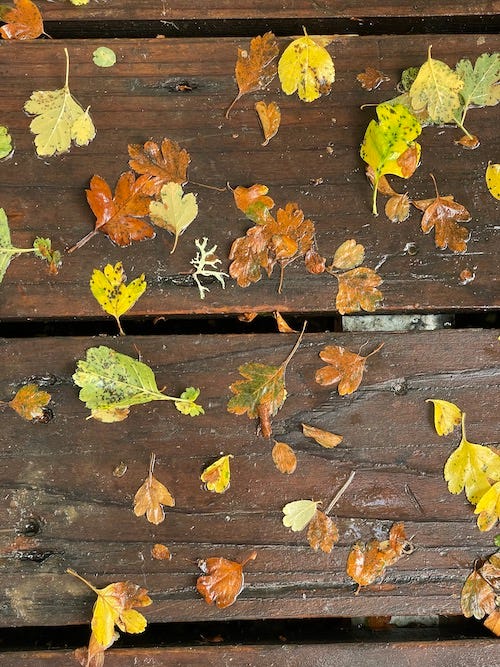
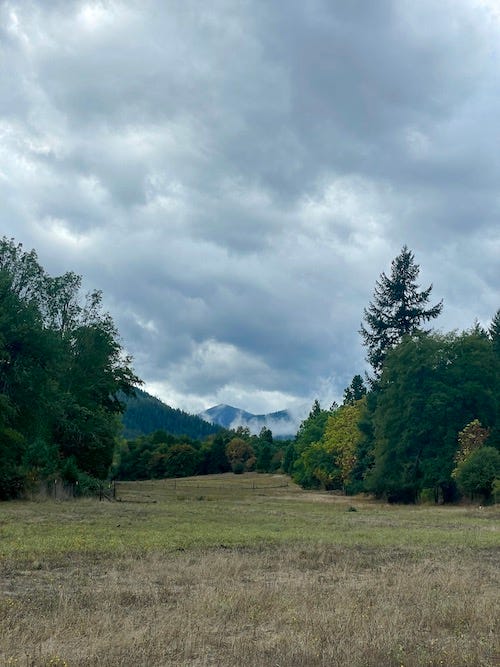
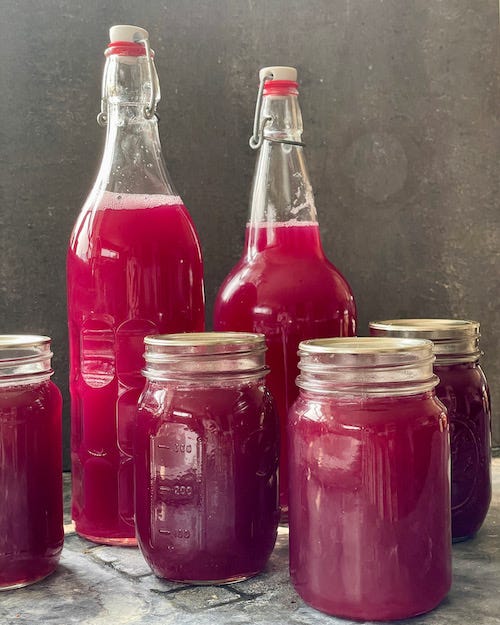
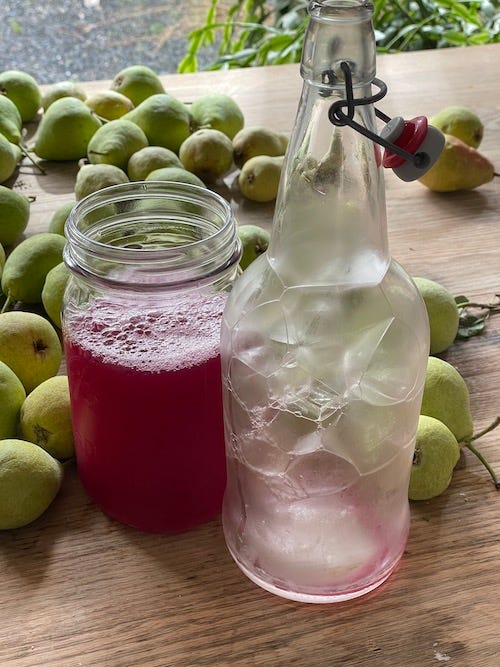
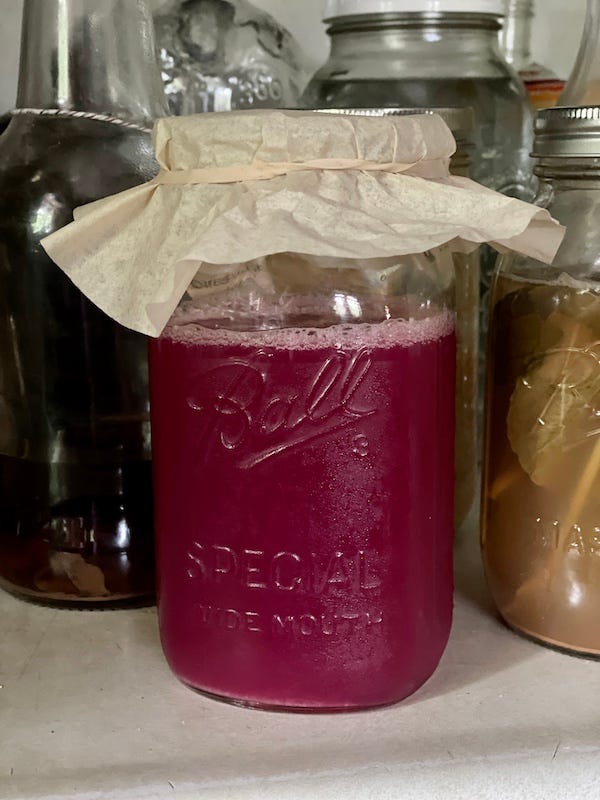
Love that steamer device, had never heard of that before and interesting to see how it works. I still have great memories of my Nana’s sweet homemade treats when we were kids, so don’t feel guilty!!
Still enjoying our banana vinegars and mulberry vinegars from your book’s instructions, now got a continuous brew going too. Thank you!